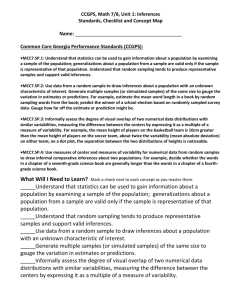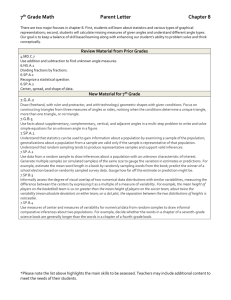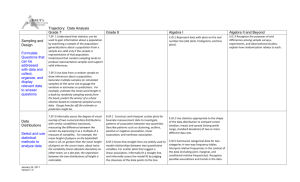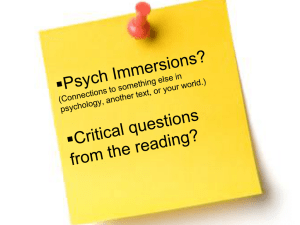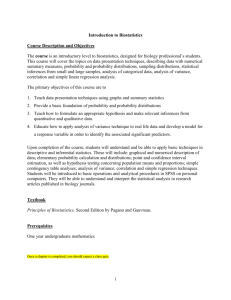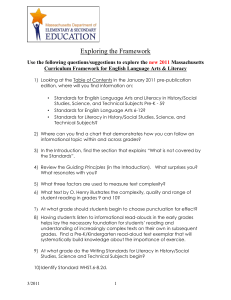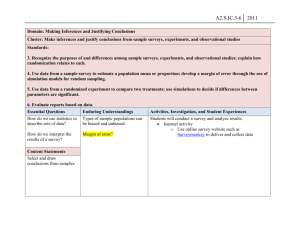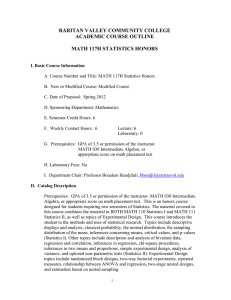Qualitative Literacy Series
advertisement
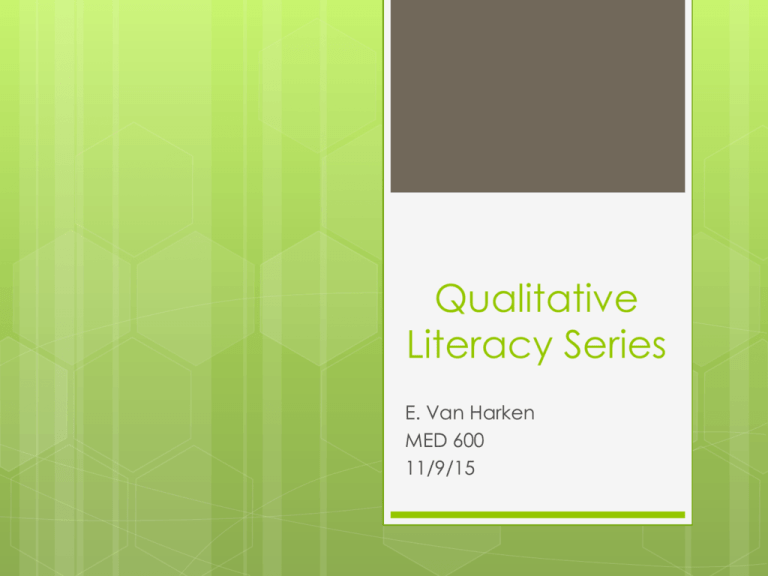
Qualitative Literacy Series E. Van Harken MED 600 11/9/15 "As the economy adapts to information-age needs, workers in every sector ... must learn to interpret intelligently computercontrolled processes. Most jobs require analytical rather than merely mechanical skills, so most students need more mathematical power in school as preparation for routine jobs. Similarly the extensive use of graphical, financial, and statistical data in daily newspapers and in public policy discussions compels a higher standard of quantitative literacy for effective participation in a democratic society. Citizens who cannot properly interpret quantitative data are, in this day and age, functionally illiterate.“ (Reshaping School Mathematics, Mathematical Sciences Education Board, 1990) Origins Joint Committee with members from the American Statistical Association (ASA) the National Council of Teachers of Mathematics (NCTM) formed the Qualitative Literacy Project Goal was to introduce the most relevant and essential topics in statistics into the elementary and secondary curriculum funded in part by the National Science Foundation Activities of the QLP Held regional conferences for teachers beginning in 1988 Statisticians and teachers collaborated to write and field test curriculum materials in data exploration and probability that were both relevant to the time and accessible to students The approach was to use real and interesting data and simulate real events to show how statistics can be practical Used a lot of graphing and taught practices that were currently in vogue for real statisticians Major teaching methods were hands-on activities, group discussions, projects, and writing reports. Provided a starting point for the Standards on statistics to be written The Qualitative Literacy Series Grades 7-12 Introduction to data analysis Students learn how to make various graphs and analyze plots in order to describe data, recognize patterns, and make conjectures Grades 6-9 Develops a working knowledge of probability Emphasis is on experiments and estimation Explore the difference between empirical and theoretical probability The Art and Techniques of Simulation Grades 7-12 Meant to follow Exploring Probability Simulations used to demonstrate real-life applications of probability and statistics Developed analytical reasoning Exploring Surveys and Information from Samples Grades 10-12 somewhat geared towards above average students Most advanced topics in the series Ideally follows the other three units Teaches statistics foundational to understanding sample surveys and how to think critically (be skeptical of) polls and surveys that bombard the daily experience CC Standards Addressed 6. SP.5 Summarize numerical data sets in relation to their context, such as by: a. Reporting the number of observations. 7.SP Use random sampling to draw inferences about a population. . Understand that statistics can be used to gain information about a population by examining a sample of the population; generalizations about a population from a sample are valid only if the sample is representative of that population. Understand that random sampling tends to produce representative samples and support valid inferences. 2. Use data from a random sample to draw inferences about a population with an unknown characteristic of interest. Generate multiple samples (or simulated samples) of the same size to gauge the variation in estimates or predictions. For example, estimate the mean word length in a book by randomly sampling words from the book; predict the winner of a school election based on randomly sampled survey data. Gauge how far off the estimate or prediction might be. CC Algebra gets pretty heavy into statistics, residuals, and correlation coefficients Rich, generative problems might make it less of a schlep These materials provide beautiful ideas for contextualized examples might need updating to make them relevant and interesting to 2015 Steal away! CC Standards Addressed S-ID Interpret linear models 8. Compute (using technology) and interpret the correlation coefficient of a linear fit. 8.SP Investigate patterns of association in bivariate data. 1. Construct and interpret scatter plots for bivariate measurement data to investigate patterns of association between two quantities. Describe patterns such as clustering, outliers, positive or negative association, linear association, and nonlinear association. CC Standards Addressed 7.SP Use random sampling to draw inferences about a population. 1. Understand that statistics can be used to gain information about a population by examining a sample of the population; generalizations about a population from a sample are valid only if the sample is representative of that population. Understand that random sampling tends to produce representative samples and support valid inferences. 2. Use data from a random sample to draw inferences about a population with an unknown characteristic of interest. Generate multiple samples (or simulated samples) of the same size to gauge the variation in estimates or predictions. For example, estimate the mean word length in a book by randomly sampling words from the book; predict the winner of a school election based on randomly sampled survey data. Gauge how far off the estimate or prediction might be. References Scheaffer, Richard L. The ASA-NCTM Quantitative Literacy Project : An Overview. Gainesville: 1990. Print. The teacher materials of the QLS
